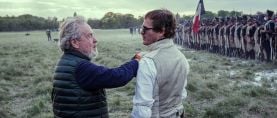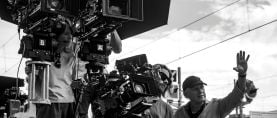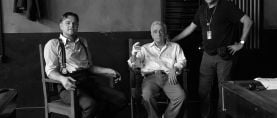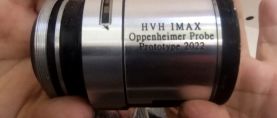
From Intimate Filmmaking to Blockbusters: Ben Davis, BSC
Davis details his work on Three Billboards Outside Ebbing, Missouri and working with the director and actors to convey extraordinary characters in a real world.
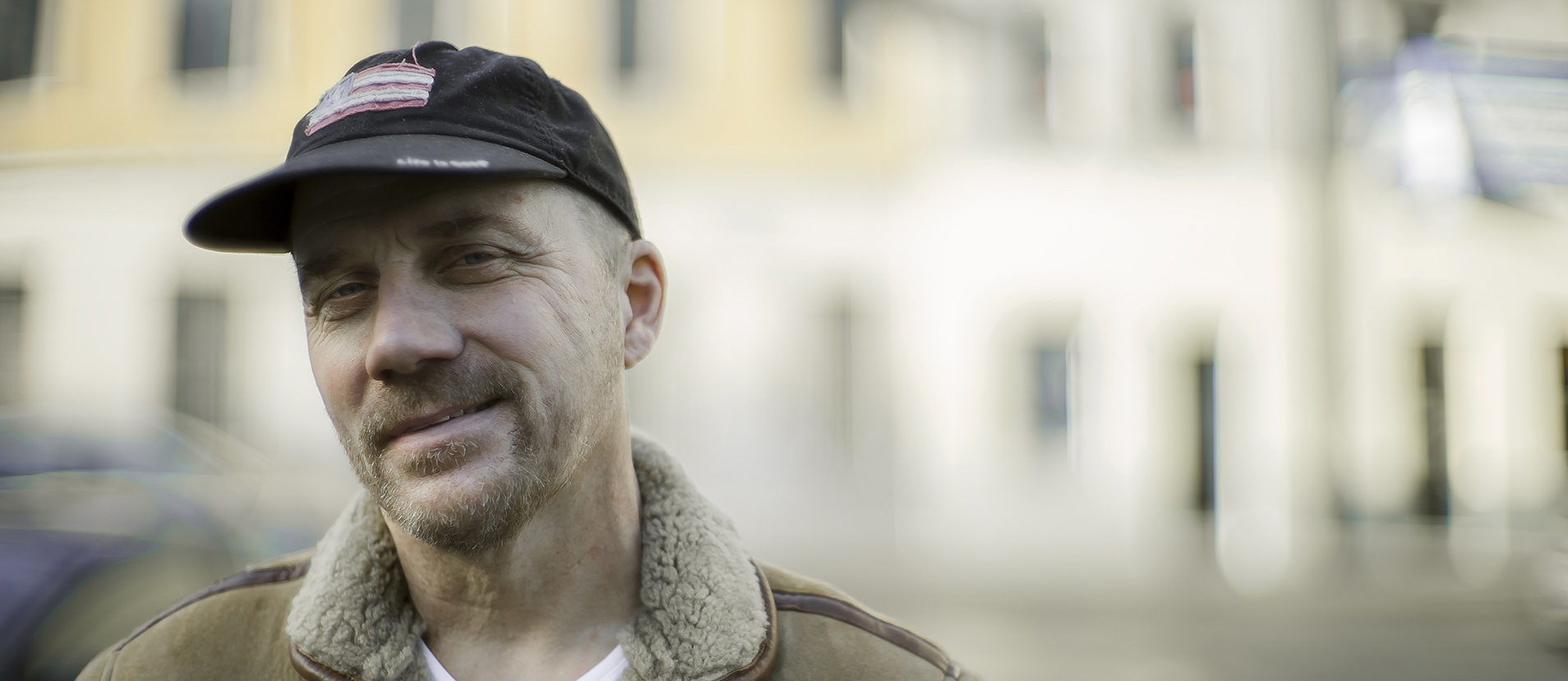
Discussing his work in Three Billboards Outside Ebbing, Missouri, the cinematographer describes how he worked to convey extraordinary characters in a real world.
On Wednesday, November 15, cinematographer Ben Davis, BSC introduced Three Billboards Outside Ebbing, Missouri to a sold-out audience at a Camerimage International Film Festival screening. Afterwards, he spoke with American Cinematographer about his work on this and other movies.
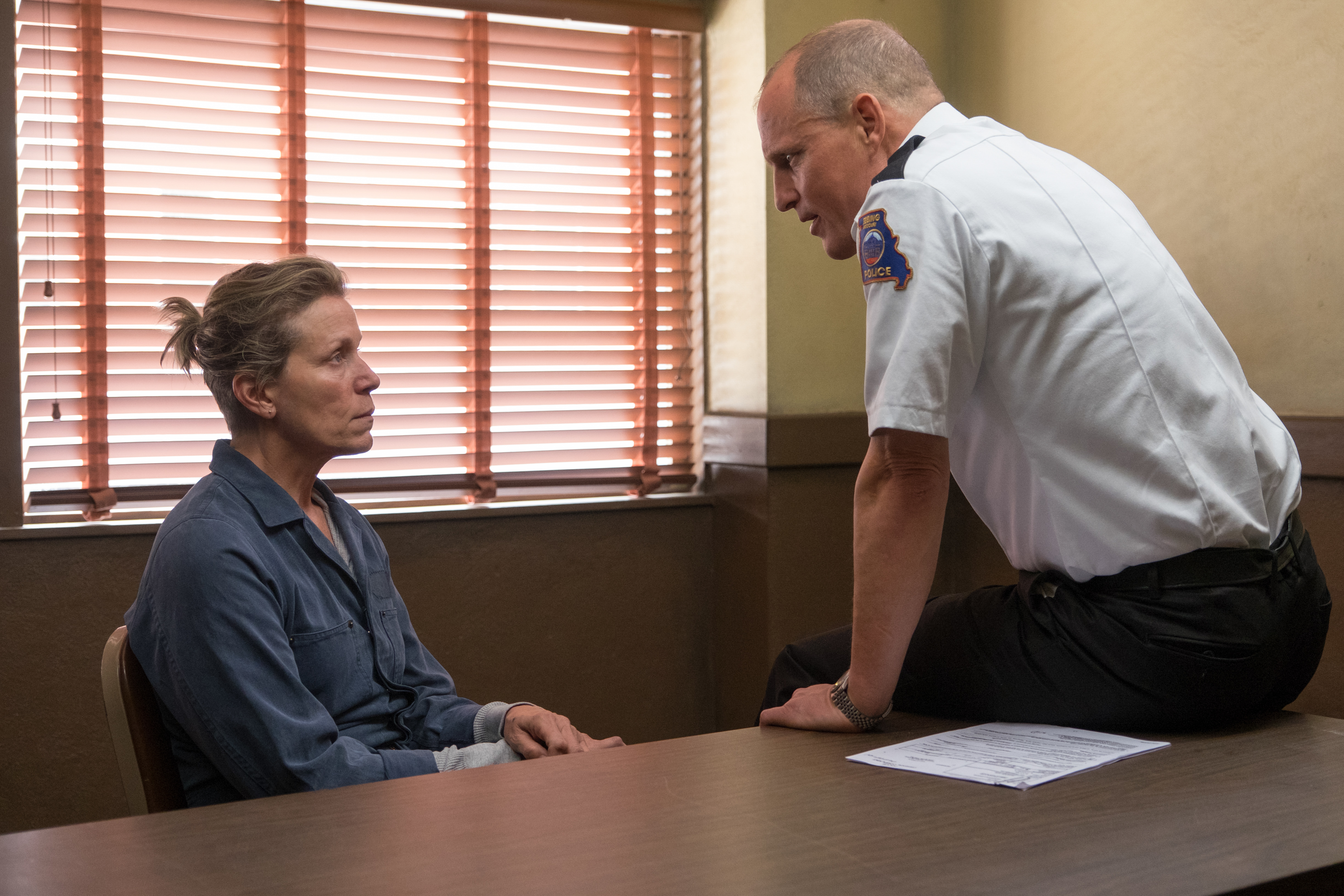
Written and directed by Martin McDonagh, Three Billboards examines the aftermath of a horrific crime in a small-town community. Mildred (played by Frances MacDormand), a bereaved mother, challenges local authorities to solve the rape and murder of her daughter.
This is the second collaboration between Davis and McDonagh, following 2012's Seven Psychopaths. McDonagh has also directed the feature In Bruges (shot by Eigil Bryld).
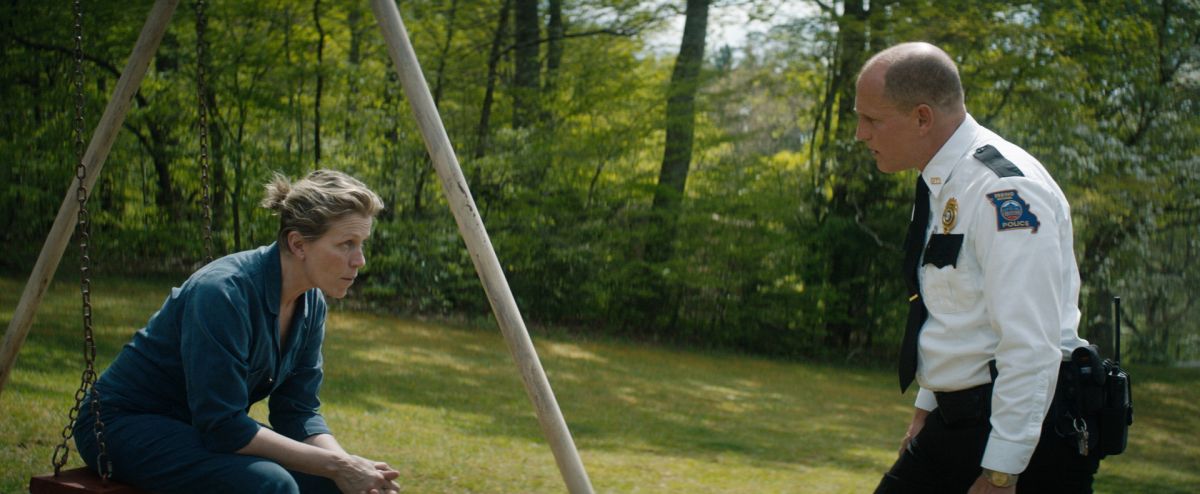
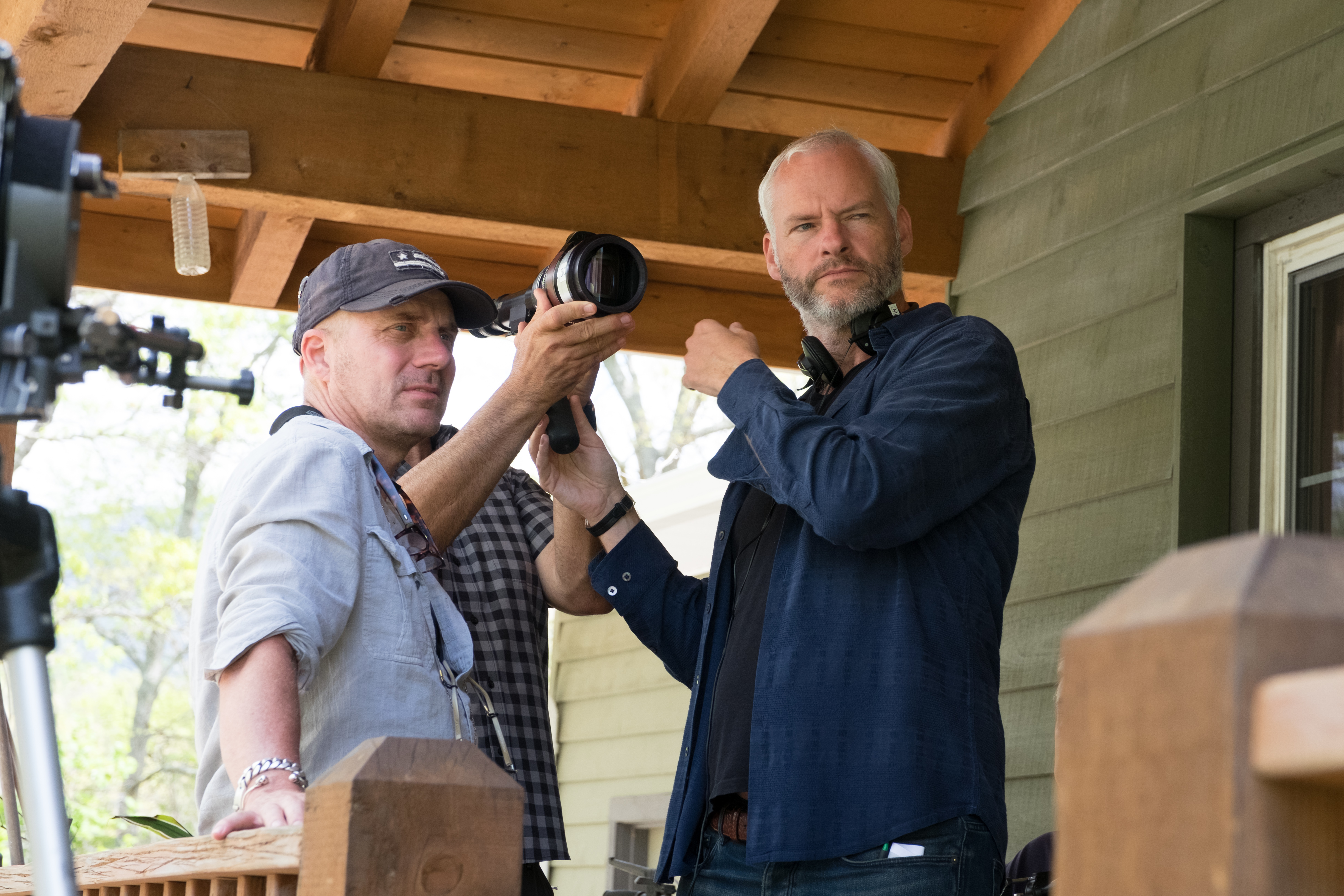
American Cinematographer: What's your relationship with McDonagh?
Ben Davis, BSC: First and foremost, Martin and I are friends. He's my favorite person to work with. I've heard him described as "touched by genius," and I agree. His scripts arrive like little gifts — I read them and I'm blown away.
Whether characters like his exist in the real world, I'm not so sure. People's language isn't that poetic or profane. But he somehow manages to deliver them and make them feel real. He's also able to offset something incredibly tragic with something that can also make you laugh. One minute you're laughing and then you're like I can't believe I'm laughing at that.
How do you construct a visual strategy to account for those abrupt shifts in tone and mood?
With Three Billboards, I felt I really needed to bed these extraordinary characters into a real world. They needed to be incredibly natural. The cinematography couldn't shout out with as big a voice as the characters in the film, otherwise the room becomes too noisy, if you see what I mean.
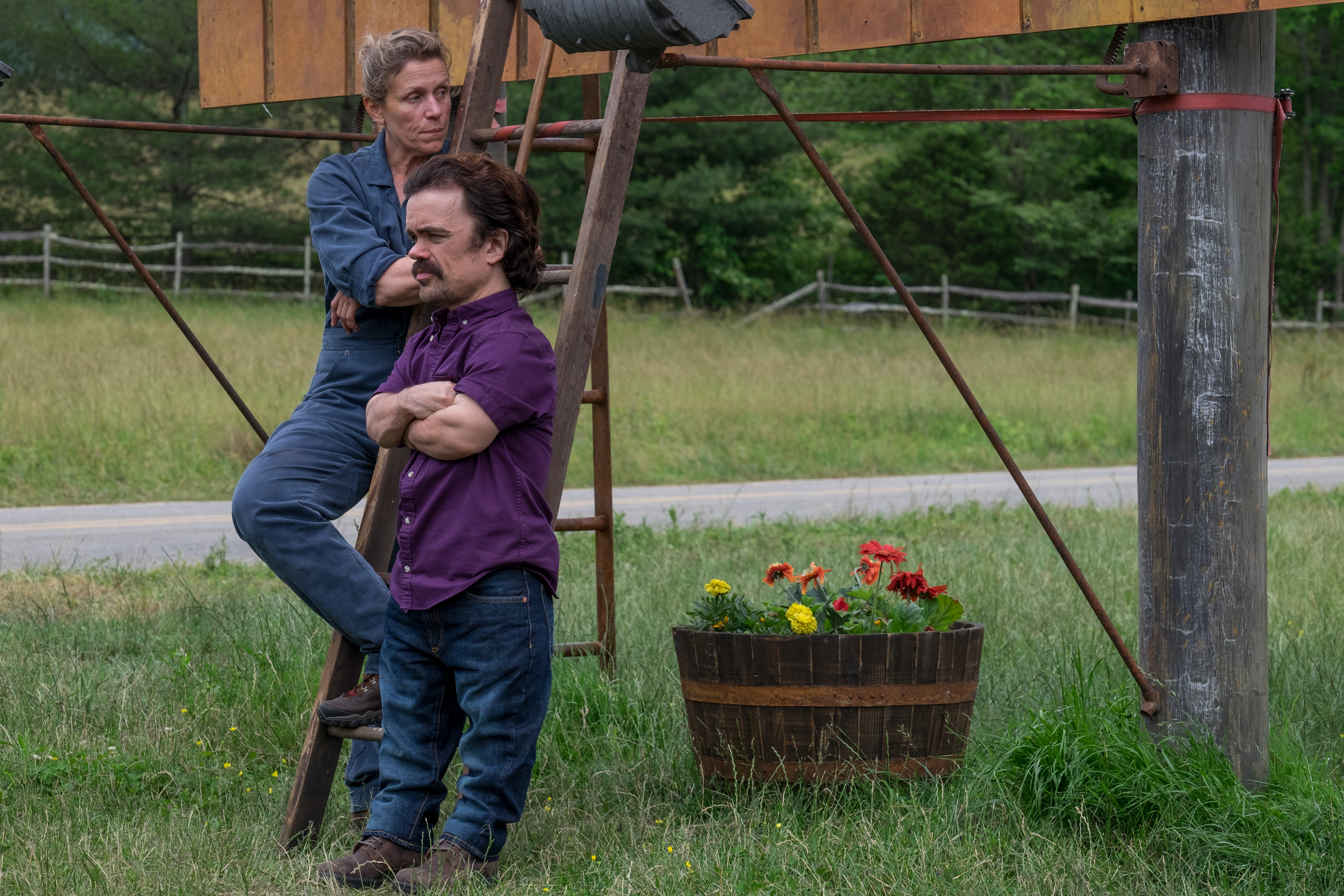

Is it a challenge to shoot such dialogue-heavy scenes?
During a conversation, I find it very difficult if you just cut to the dialogue, cut, cut, because you become very aware of the edit points. And what Martin believes is that the reactions to the dialogue are as important as the dialogue itself. Particularly for Frances. Her character is the one that takes you on this journey through the film. A lot of the time it was about seeing her reaction to what was going on. Or the reaction of the other players. That allows you not to have to crosscut to the dialogue continually.
That requires a certain amount of coverage. I generally always try to work with two cameras. There are compromises you have to make in terms of lighting when you work two cameras. Because it can be very difficult to light two cameras perfectly. One camera compromises the other and vice versa.
But you have to make those calls. For me this film wasn't about that visual perfection, it was about delivering the performance. It would have been wrong for me as a DP to go, "I don't like the way that looks, I'm not putting a camera on that."
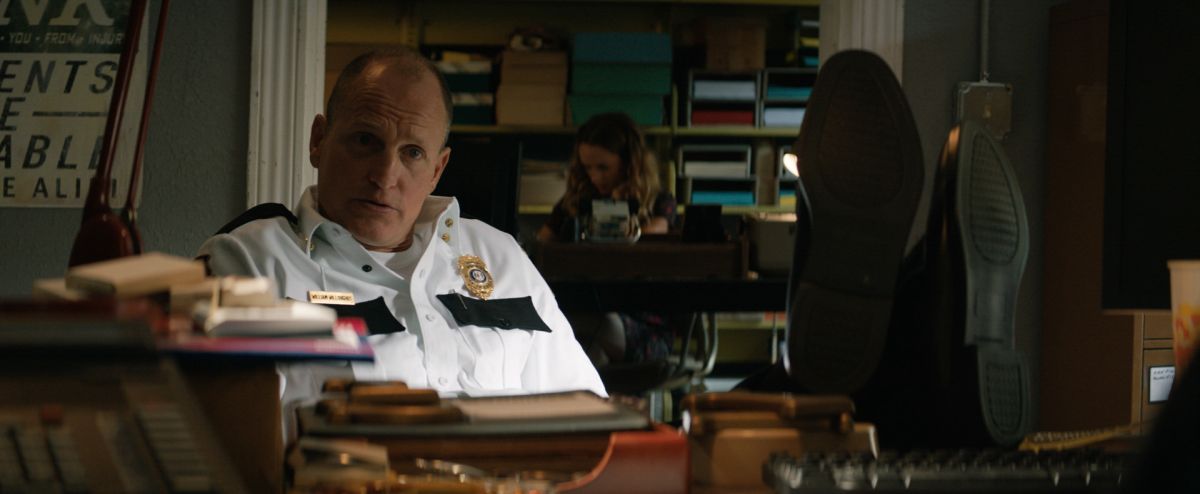
What's your relationship like with the actors? How do you plan for their different performing styles?
I don't try to necessarily form a personal bond with the actors, but a lot of time with the actors, in the choreography and the way things work, it's a dance between camera and actor. Particularly if the actor's very good. There has to be some sort of symbiotic relationship. That happens over time, as you get to know each other.
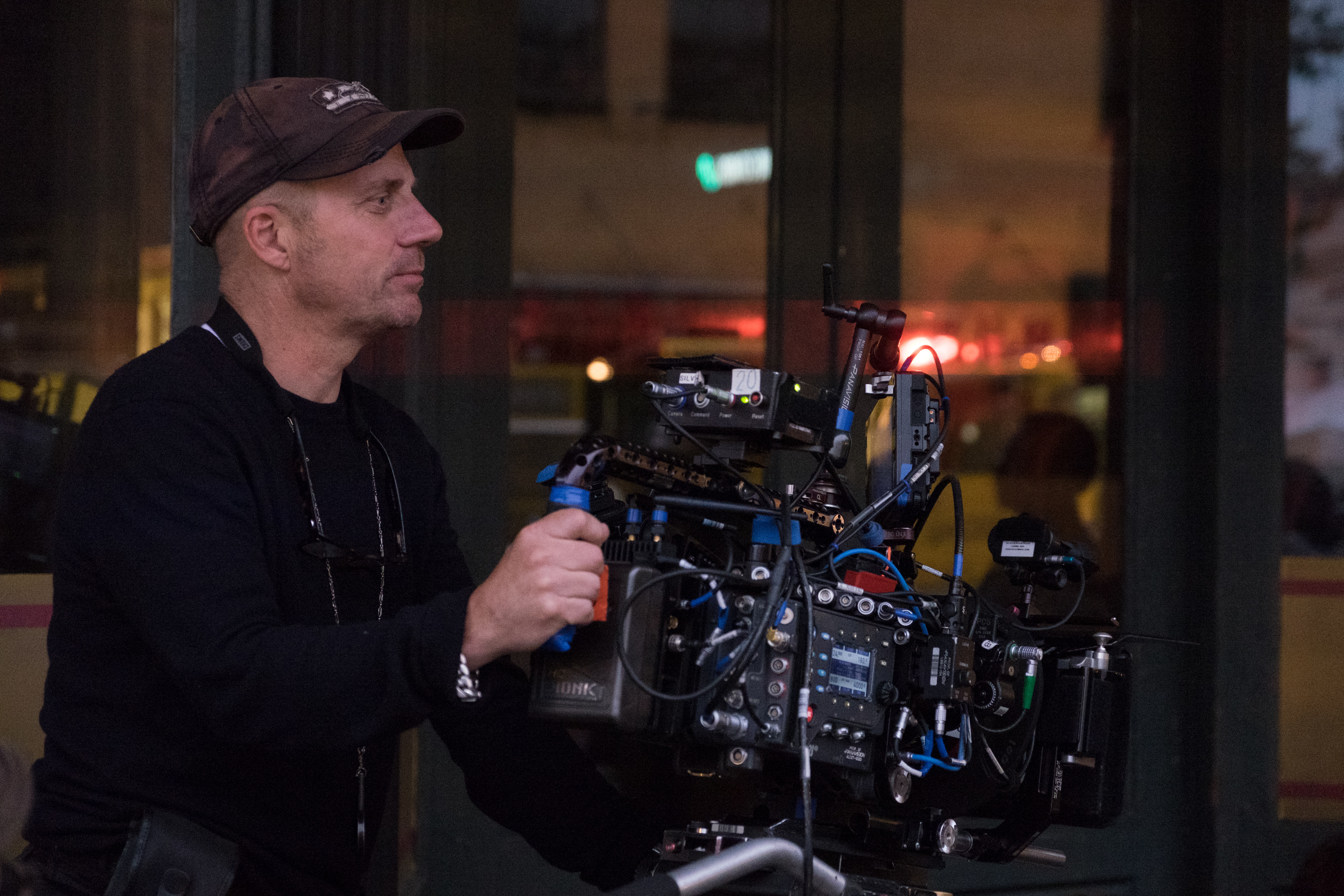
Actors will develop a trust and a bond. When I met Frances she discussed how she was thinking about referencing John Wayne in her portrayal of Mildred. Then when I saw her on the first day on the set and I thought, shit, she's John Wayne. So we bonded pretty much straight away.
She's an uncomfortable character, she does things that are difficult to justify.
She's a woman full of grief and rage. She's an incredible character. What I like about her is she's a strong female role. She's inspiring. Every time I see the film I am blown away by her.
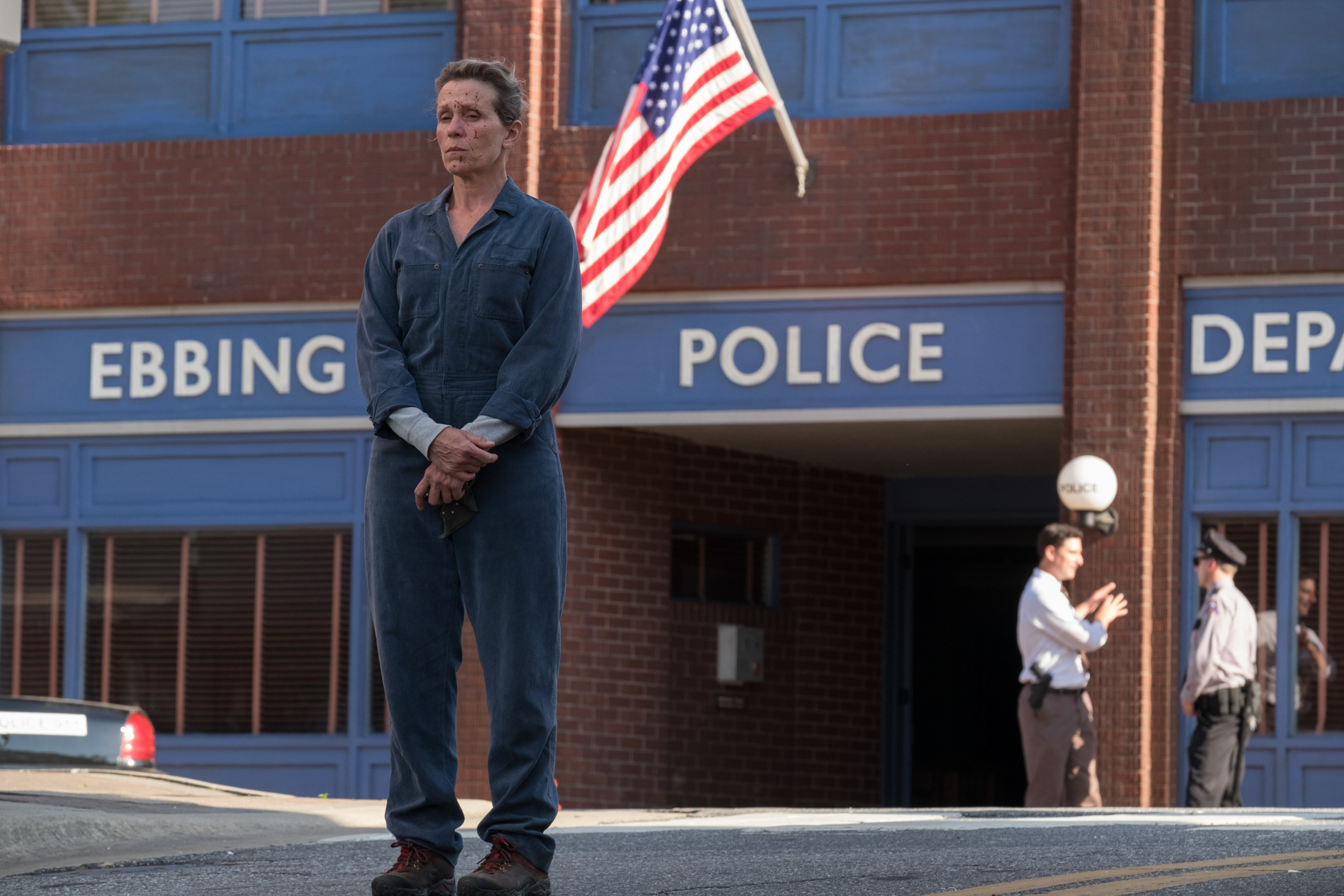
With everything that's going on, her role has become very meaningful. There's resonance about it. There's a line that I love. She's being interviewed in the police station, accused of drilling a hole through a dentist's thumb. And she says to Willoughby [Woody Harrelson], the police chief, "I guess it's his word against mine. It's like those rape cases you hear about. Except this time the chick ain't losing."
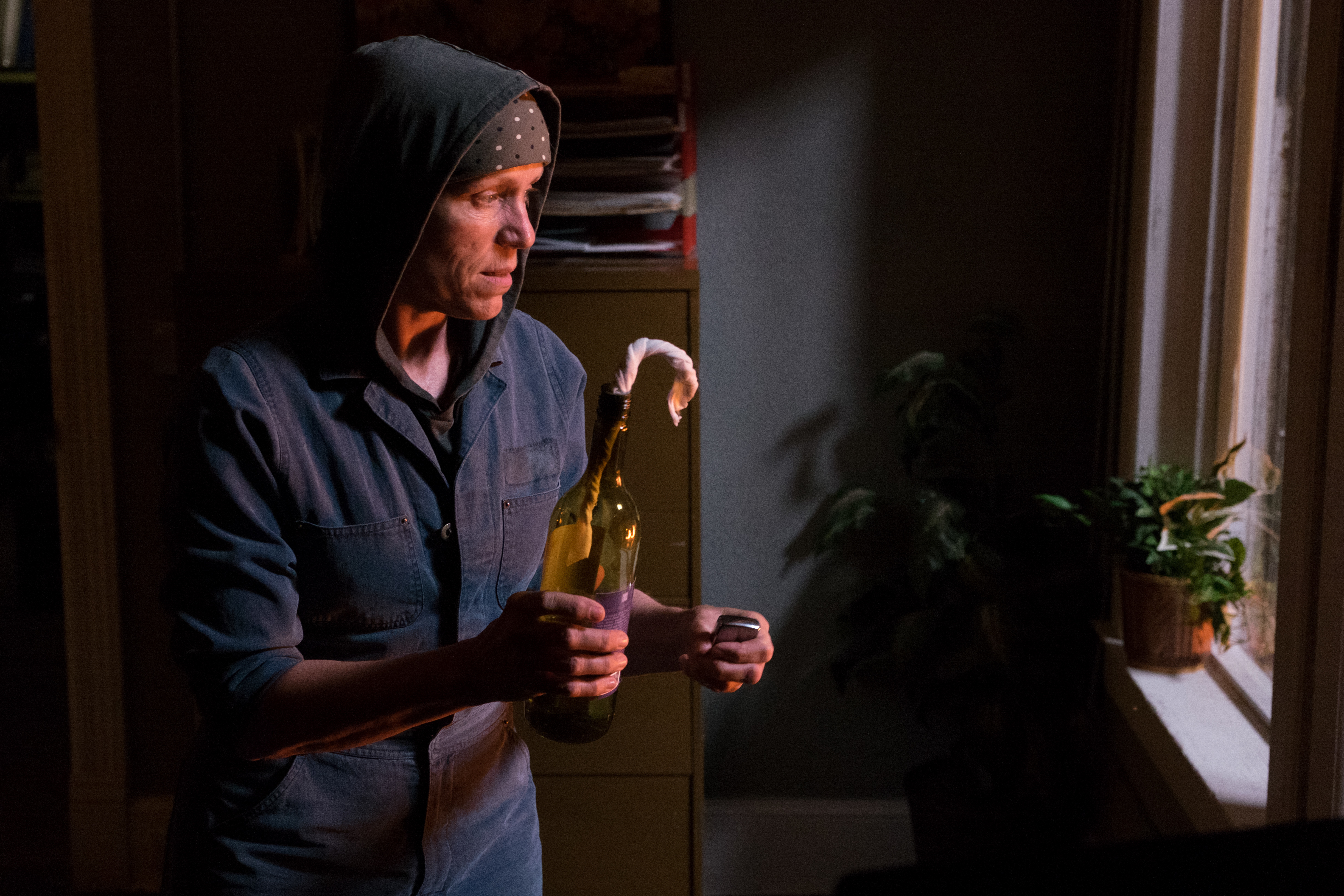
The cameras are very close to Mildred for a lot of the film. I thought the camera really needed to be present with her. I wanted the audience to be almost uncomfortably close to her. Frances is just a pro. You could put a camera six inches in front of her face, where a lot of people are incredibly intimidated, wouldn't bother her in the least.

Did you have to alter your methods with Sam Rockwell [who plays Dickson, a deputy], who's famous for improvising?
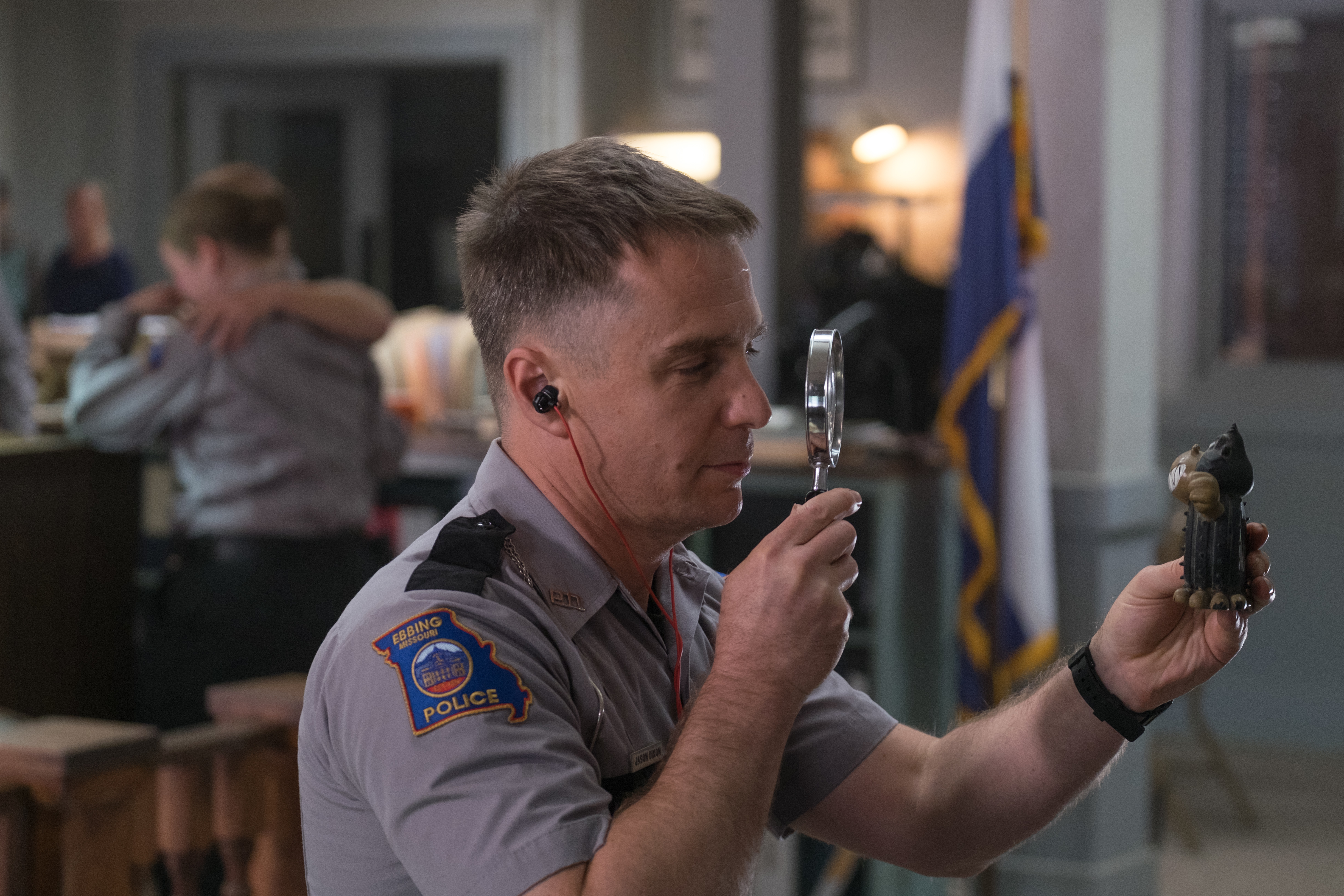
I love Sam; I've worked with him before. The thing with Sam is, you give him the room to maneuver. You give him the room to maneuver and then you get the hell out of the way. You've just got to let him go. He's a joy, because he has so much to bring to the scene. Every day, you have no idea what he was going to do. You knew what the dialogue was, you knew what the pages were, they're Martin's words, fantastic dialogue, great material — but what's Sam going to do with it? You sit back and you enjoy the ride.
Where did you shoot?
North Carolina. It's an entirely location film. There are no sets of any sort except a small build inside the police station. It was an existing haberdashery shop which they redressed, rebuilt a little. They had to section bits off.
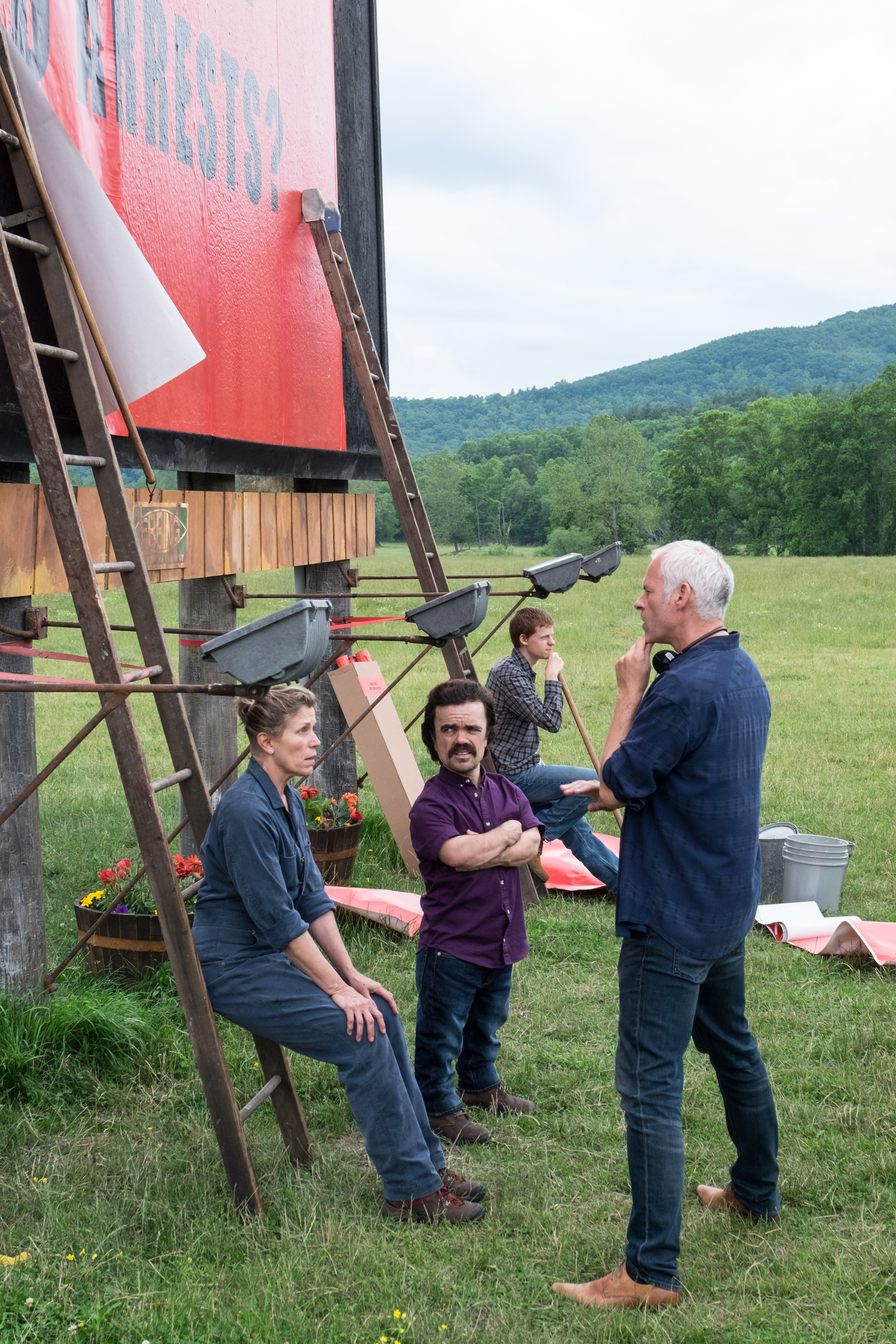
We spent a lot of time on prep with Martin. We spent a lot of time just at the location. It's very easy in prep to get locked in an office pushing around bits of paper and sitting in endless meetings in which you discuss the same things again and again. I made sure that Martin and I spent as much time as we could on the actual locations discussing how we were going to make the film.
He sketched out a rough storyboard, which he showed to me way before we started. He does these sort of stick drawings, not very good stick drawings, but very good story boards. I don't think we referred to them particularly when we were in the shooting process, but we had a very good idea of what we wanted to do.
I like to write everything down. It's a way of cementing things, a way of taking something that was written into something visual. It's like sketching out storyboards in a way. It's an exercise in transferring words to images.
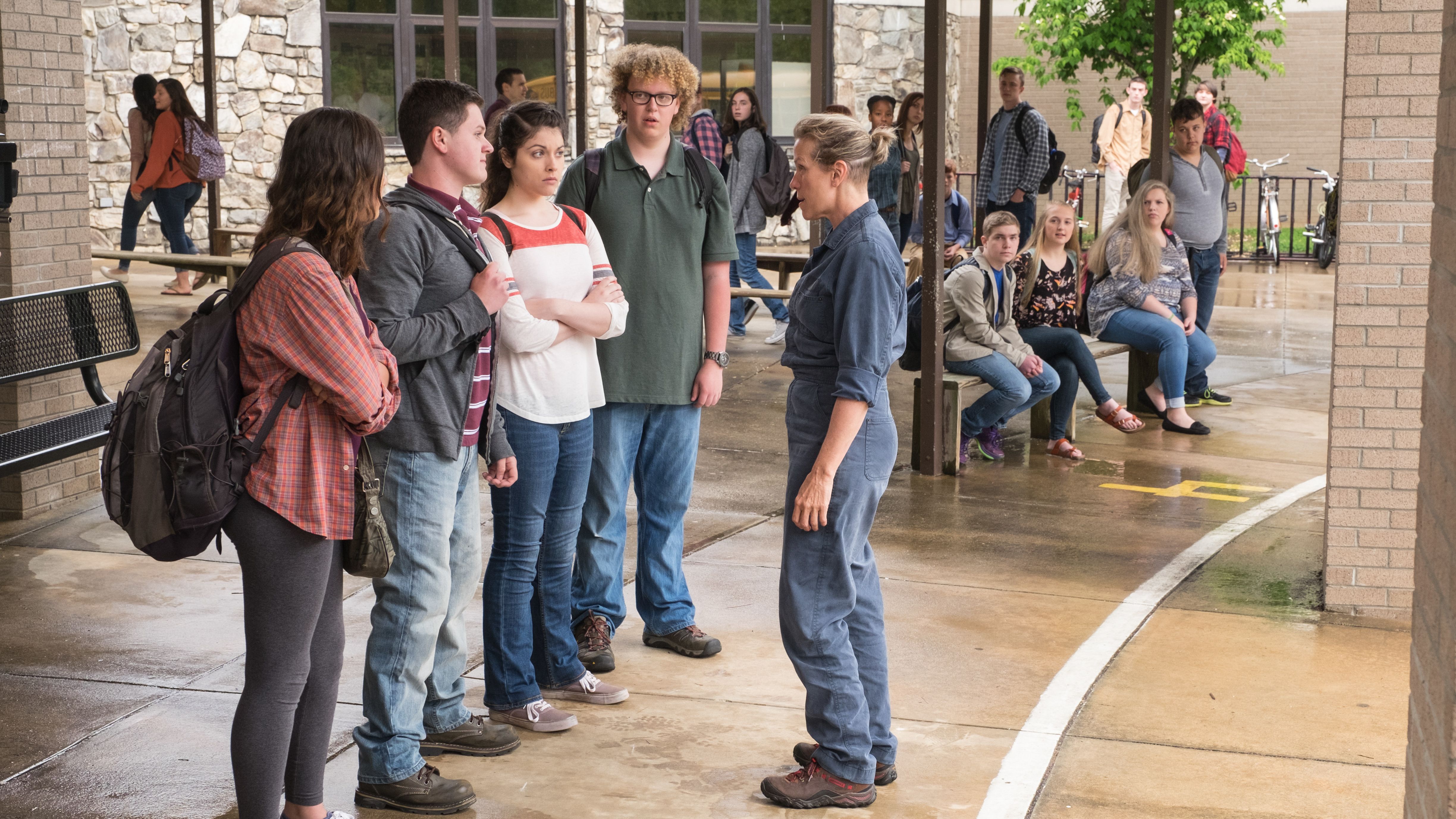

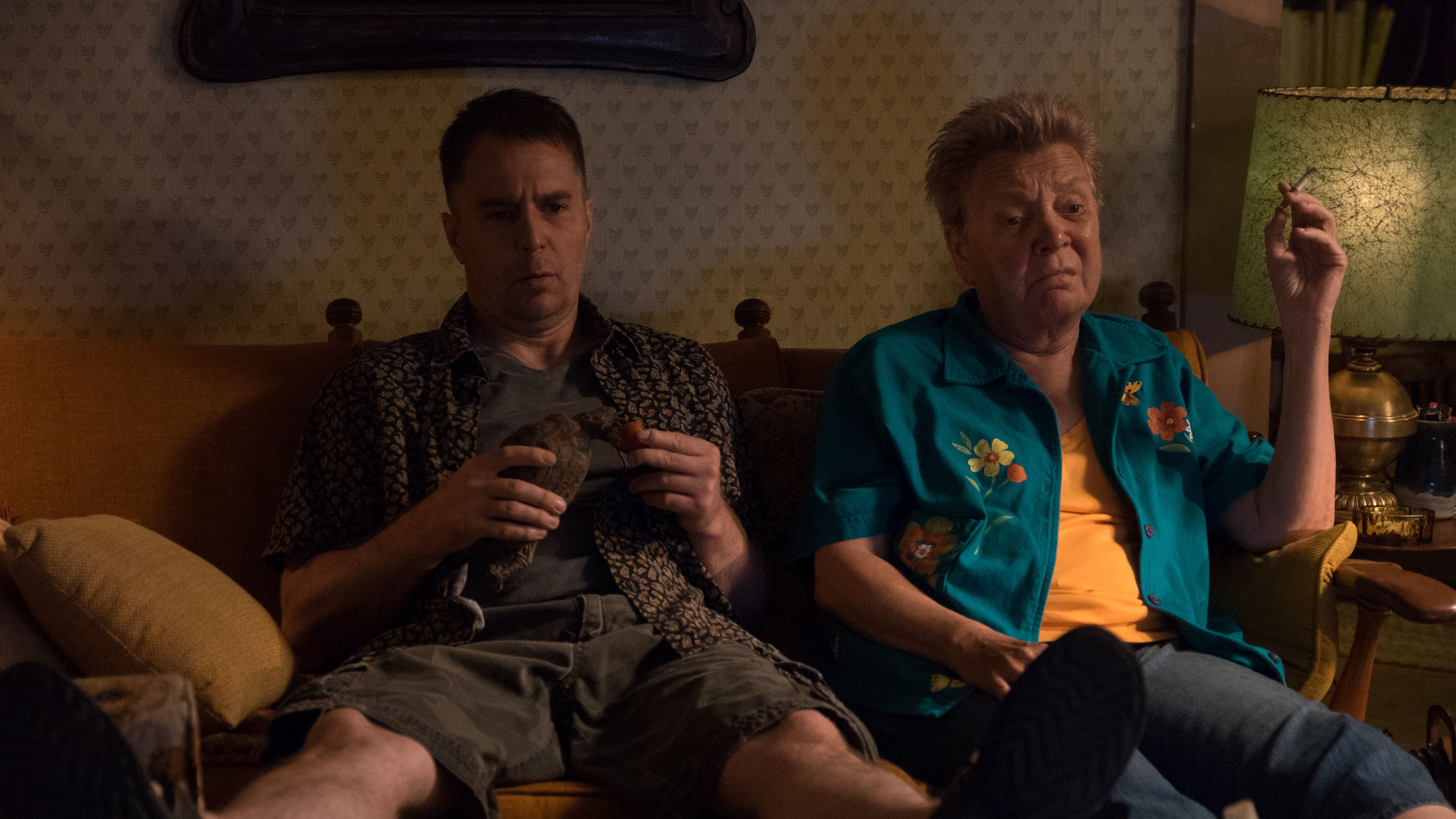

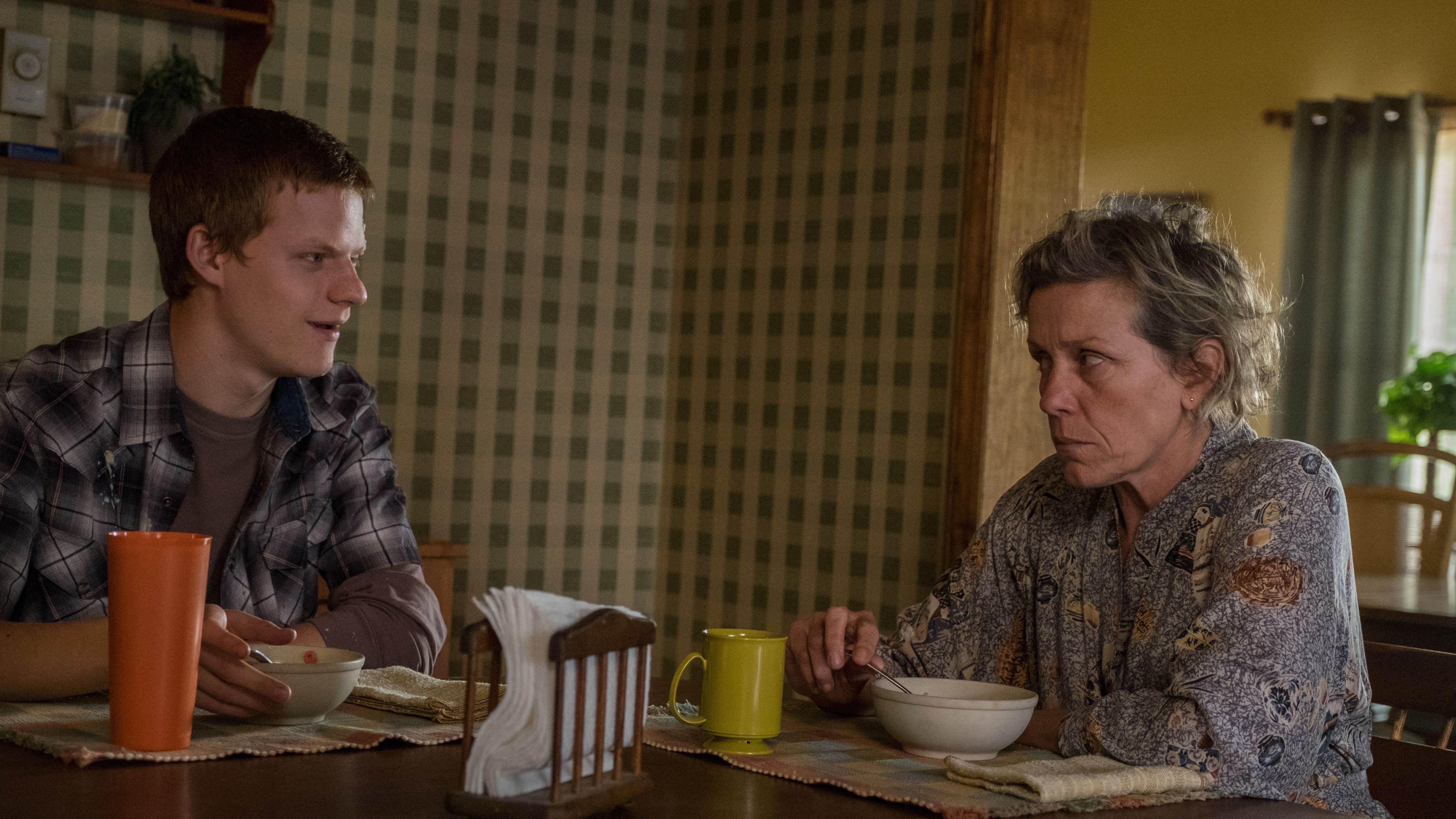
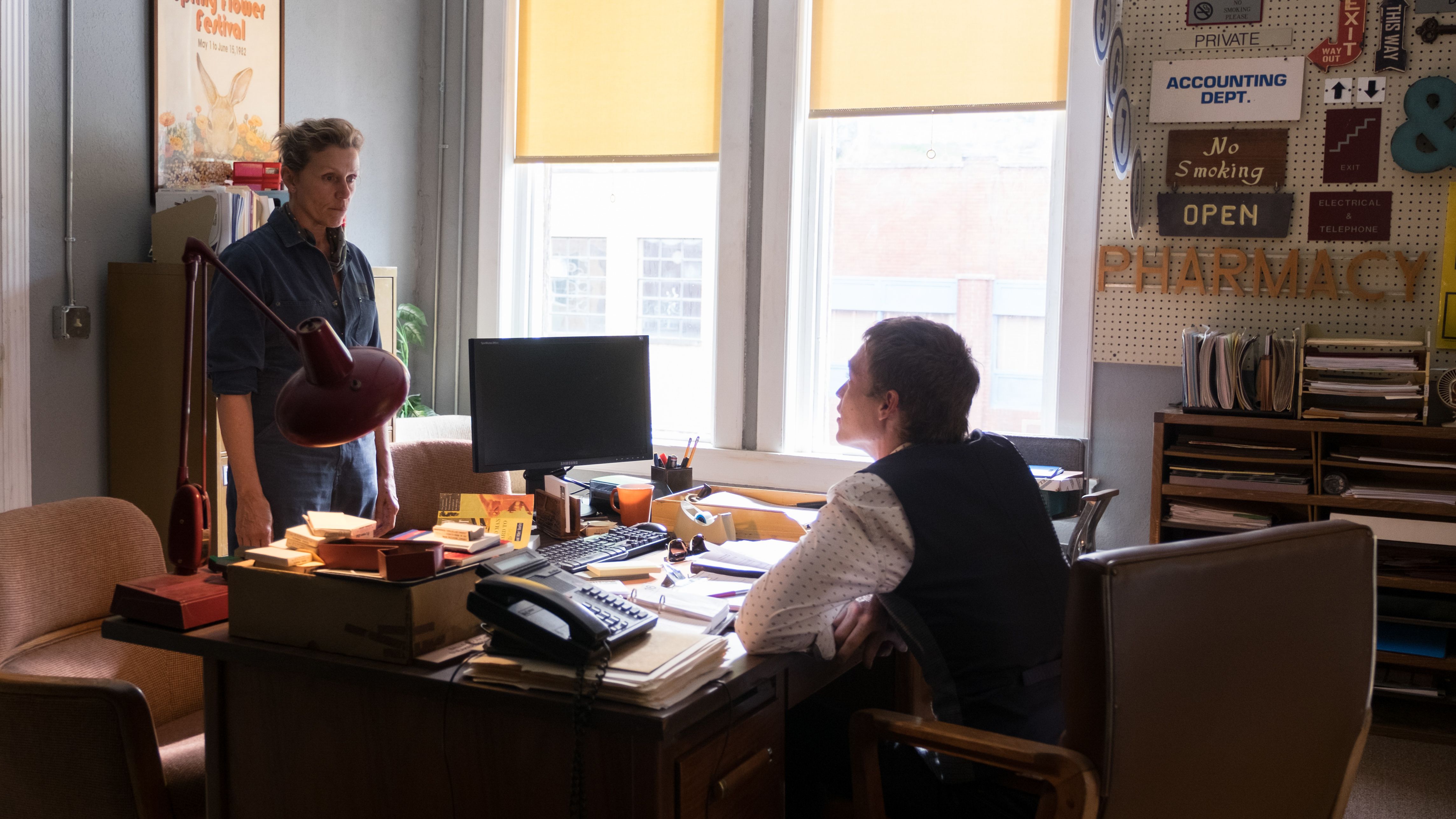
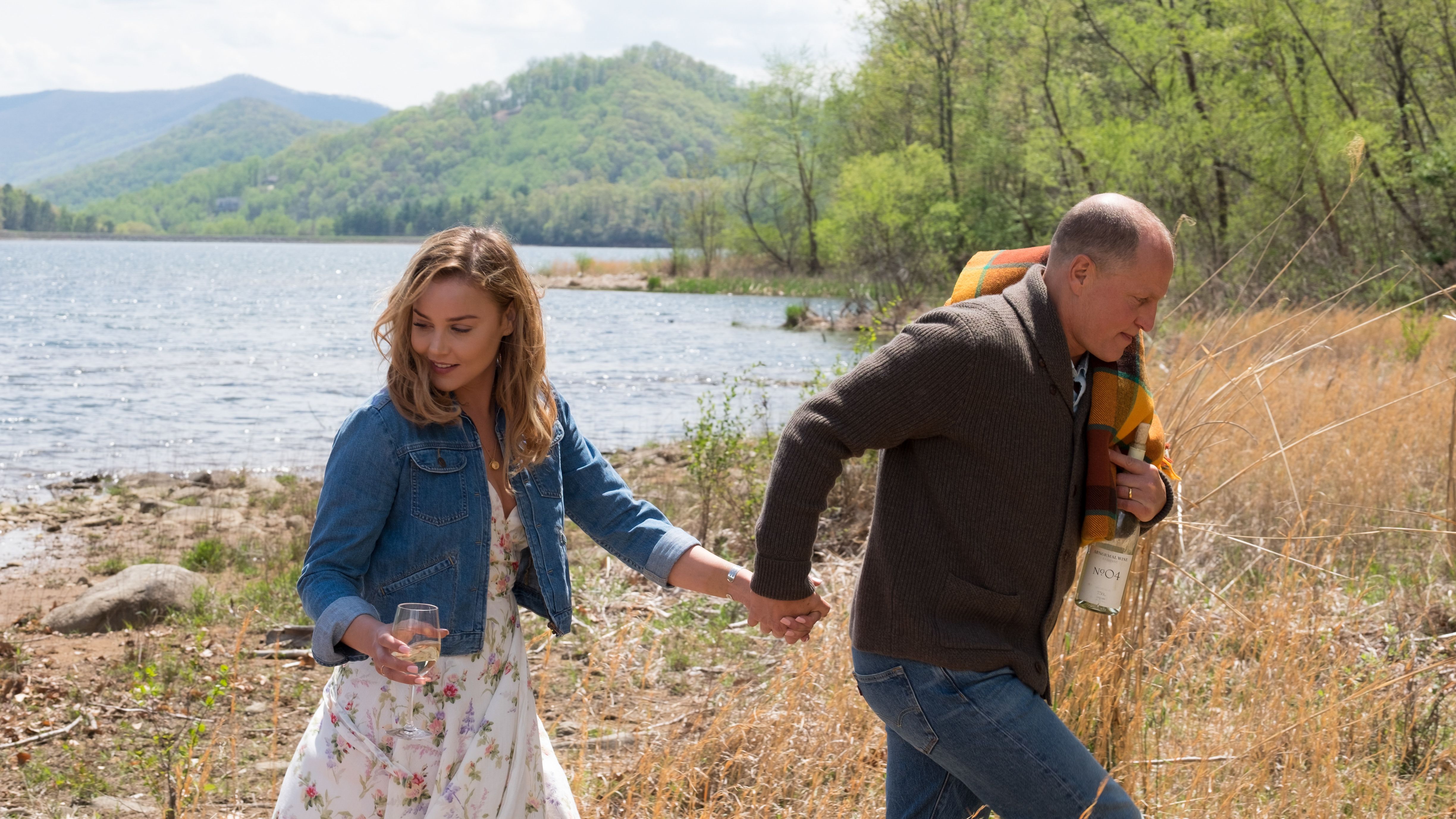

Maybe this is a good point to talk about how you transition from an intimate piece like this to a Marvel blockbuster.
I get asked that a lot. I'm very lucky that I get to do both. My feeling is I'm a cinematographer and I can lend myself to any genre. I don't have a fixed style, I like to work within each. Each film speaks for itself and has a way that I feel it needs to be shot.
The challenges are different, but the end goal is the same, to tell a story. It's not about making wonderful images. If that's part of what is required, great. But mostly you have to tell a story.
It's all relative. You go into those films, they have a $100 million budget or more, but the ambition is greater. So they have a hundred million dollar ambition. If you go to an independent movie, they have a $15 million ambition. It doesn't really change.
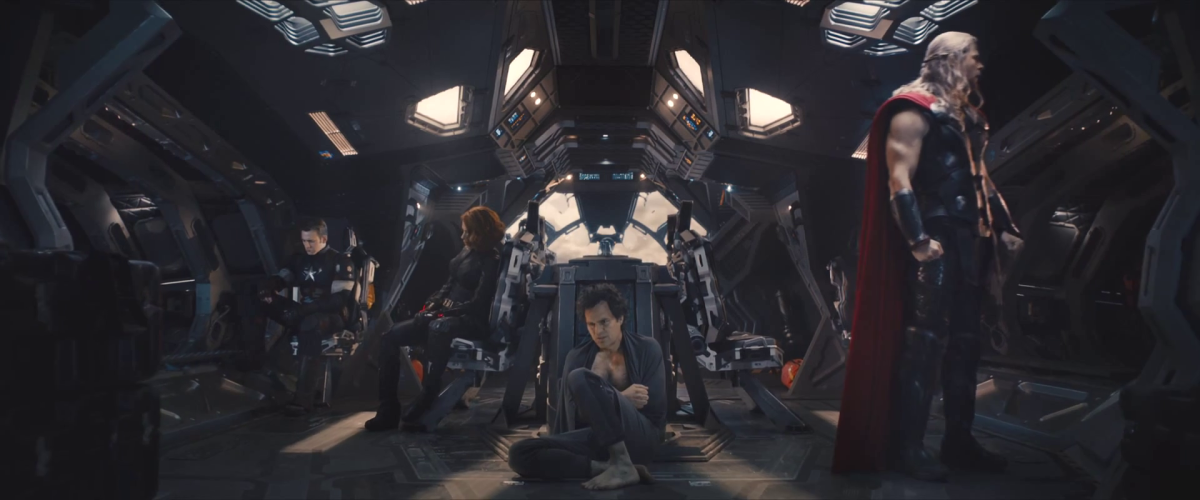
The differences are you get the tools to do what you want to do. I'll give you a great example. On Avengers: Age of Ultron, we were shooting in the courtyard of an office complex. On one side there was a staircase with a big window at the top. And I wanted a light, an 18K to come through that window.
But there was no access. It was high up, about 30 or 40 feet in the air, and there was no way of getting a light up there without access. I thought maybe we can bring a tower in or maybe build one in there, but there was nowhere to put it.
So you know what we did? We got a big, big crane, like a construction crane, and we lifted a genie boom over the roof into the courtyard and put a lamp on it and went on.
And then when we shot it, I didn't like it and I switched it off. That's the difference.

Also, your crew's huge. That's hard as a DP, there are an enormous amount of people you're in charge of. By the end of the shoot, after about six months, you get the hang of it. I think the sad thing is sometimes you lose sight of the creative and it becomes about the logistics. Making the movie, getting the sets ready. You start to lose sight of that creative call, that's the danger of those films.
Can you talk about how you handle pre-visualizing sequences?
Previsualization is a tricky one for me. I'm a lover and a hater of it at the same time. What's tending to happen a lot now is previsualization is done by this department that doesn't seem to slot in anywhere. It's a lot of people with a lot of computers conjuring up shots, which is fine, if you use it the way it's meant to be used.

But sometimes it becomes a dictum, suddenly you get on set and somebody says, "No, we've got to do this because we pre-vizzed it."
Hang on a minute, these people are not the director. The director may have some input but not always. It's just a load of people who've never been on a film set, never made a movie, suddenly dictating to you what your shots are going to be.

If you use your pre-viz like a storyboard, that's fine. Look at it and say, I really like that shot, let's try and embrace that, that's really good let's use some of that . And another shot, you might think we don't need that, that shot serves no purpose, that's just showing off the kind of thing you can do in pre-viz. So let's get rid of that.
But when you get into a situation where they are saying that's what we got to shoot — which sometimes happens, the visual effects department will turn around to you and say we've already started building that shot. Or you're doing stuff with motion, and they'll say we're already programming that.
Well stop a minute, you're the tail wagging the dog here. That isn't filmmaking in my mind. Because if you're going to do that, you may as well make an animated movie.

In films like Guardians of the Galaxy and Doctor Strange, you've helped establish a look and tone for the entire Marvel universe.
With Guardians, there was something when we started to work on it, it had a kind of Star Wars feel about it. What I like about that film is that it has this joy. It represents [director] James Gunn. Someone told me the other day that the movie had a sort of charm and wonder about it. I thought, that's exactly what James is like, he's like this big kid, he has this wonderful childlike enthusiasm for his characters and what he's doing.
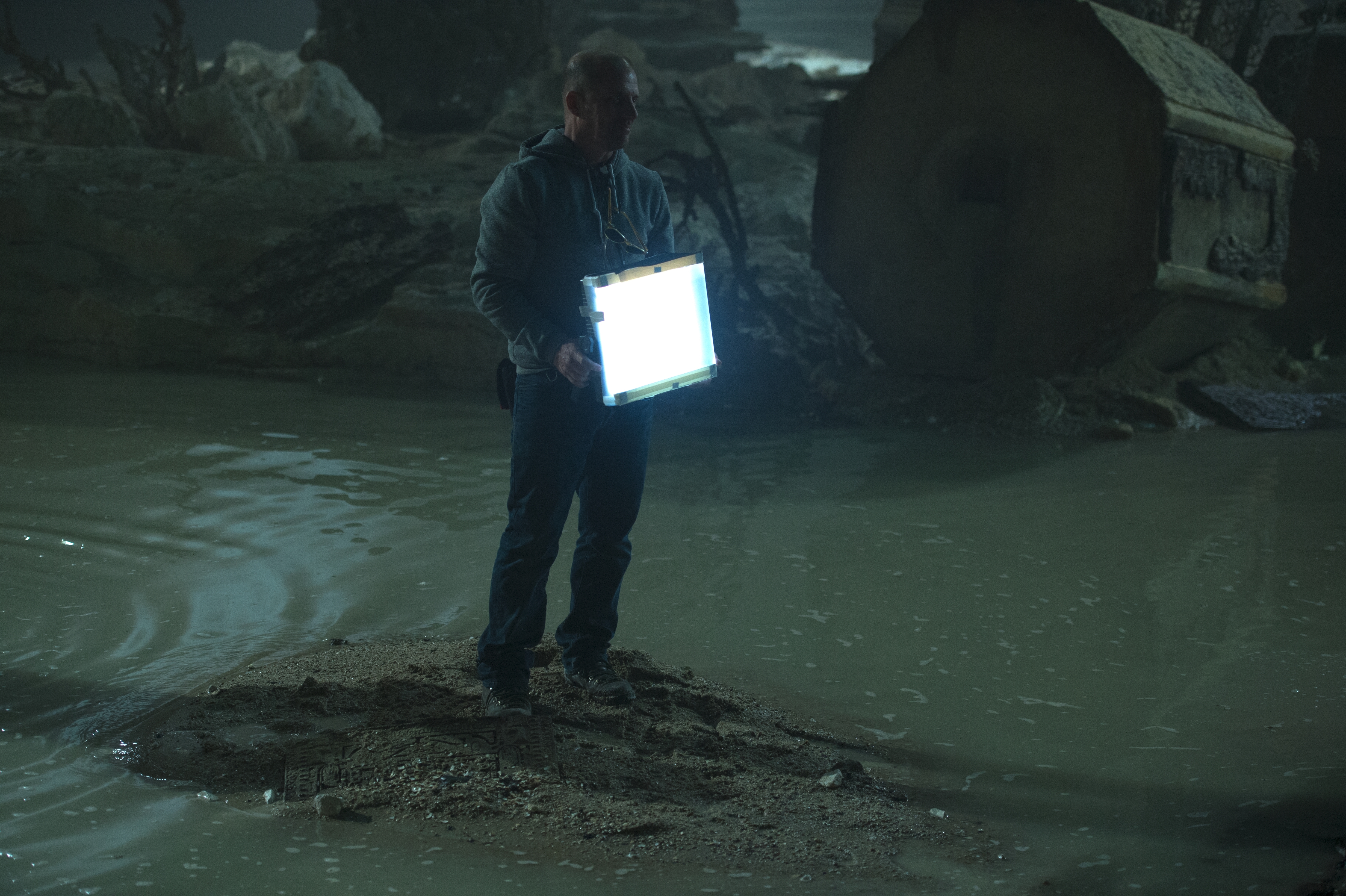
The reason it worked so well was because it wasn't, oh let's just shoot something. It was everything was planned and designed beforehand. That makes a massive difference when you're trying to execute sequences like that. You can't wing that stuff, you just can't.
Your next project is Dumbo for director Tim Burton, someone with a pronounced visual style of his own.
He's a genius, and he's a joy to work with. What I loved about working with Tim is he's always a surprise. Tim has a vision of what the film should be, and it's not always what you think. Because you think maybe we'll do it like this and he'll go no, no, like this. And you go oh, and then you look at it and you decide well he's absolutely right, that's fantastic. That's what I loved about working with him. He's not only a very artistic voice, but he's such a unique one. That's what I'm trying to say. His voice is so unique. And it has been for so long. And this film is unique again in a very different way. It's not a classic Tim Burton subject. But he has brought his genius to it.
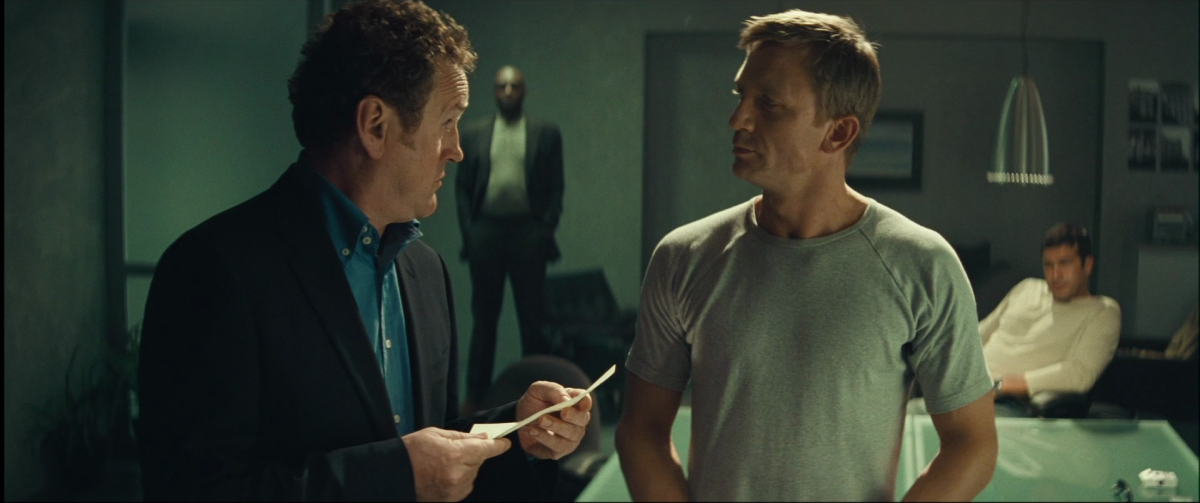
In some ways, Layer Cake was your breakthrough film. There's a crispness to its look, it's terse and direct.
It's got something. I can't quite put my finger on what it is. For me, when I look back at it, I look at the casting. Because you are seeing a lot of people very early in their careers. Sally Hawkins, Ben Whishaw, Tom Hardy. Sienna Miller's first role. Daniel Craig was established then but wasn't James Bond yet.
That was Matthew's first feature directing job, and Matthew [Vaughan] is now an extremely accomplished director. But he was pretty green then. I hadn't shot many films, so we were both coming in with that.
There's a sort of naiveté to it which I quite enjoy. I look at it and I can't believe I did that. I took terrible risks. Why didn't I put any light there? Well, because I didn't know any better. And actually I think that's a good thing.
How do you keep that excitement in your work?
Keep it fresh. I think you have to look at what's going on around you. Camera imagery is constantly changing, reshaping. So you need to be very aware. Also about what's going on in the world around you, art, photography. And you never stop learning. If you ever get to the point where you think you know what you need to know, then you're in trouble.

I watched Billboards again, I hadn't seen it for a while so I thought I'd sit and watch it. All I could see is the faults. As long as you can do that, not say oh this is great, as long as you can see the faults and see how you might do things differently, then you're constantly evolving.
I used to get depressed, think "Why did I do that?" But if you're creative, it's actually very positive. Because it means that you're always looking to progress and moving forward rather than stalling.
Is this your first Camerimage?
It is. I was scheduled for a workshop on widescreen cinematography, but I was snowed in and couldn't get here.
I really like Camerimage. I love that there's no red carpet — no celebrities. Just a group of people coming together to watch and talk about cinematography as an art form. I like that. It's all generations, retired cinematographers, working cinematographers, students.
I go to these events and I hang out, people come up and introduce themselves. I think what I like most about it are all the young people, their enthusiasm, their love of the craft.
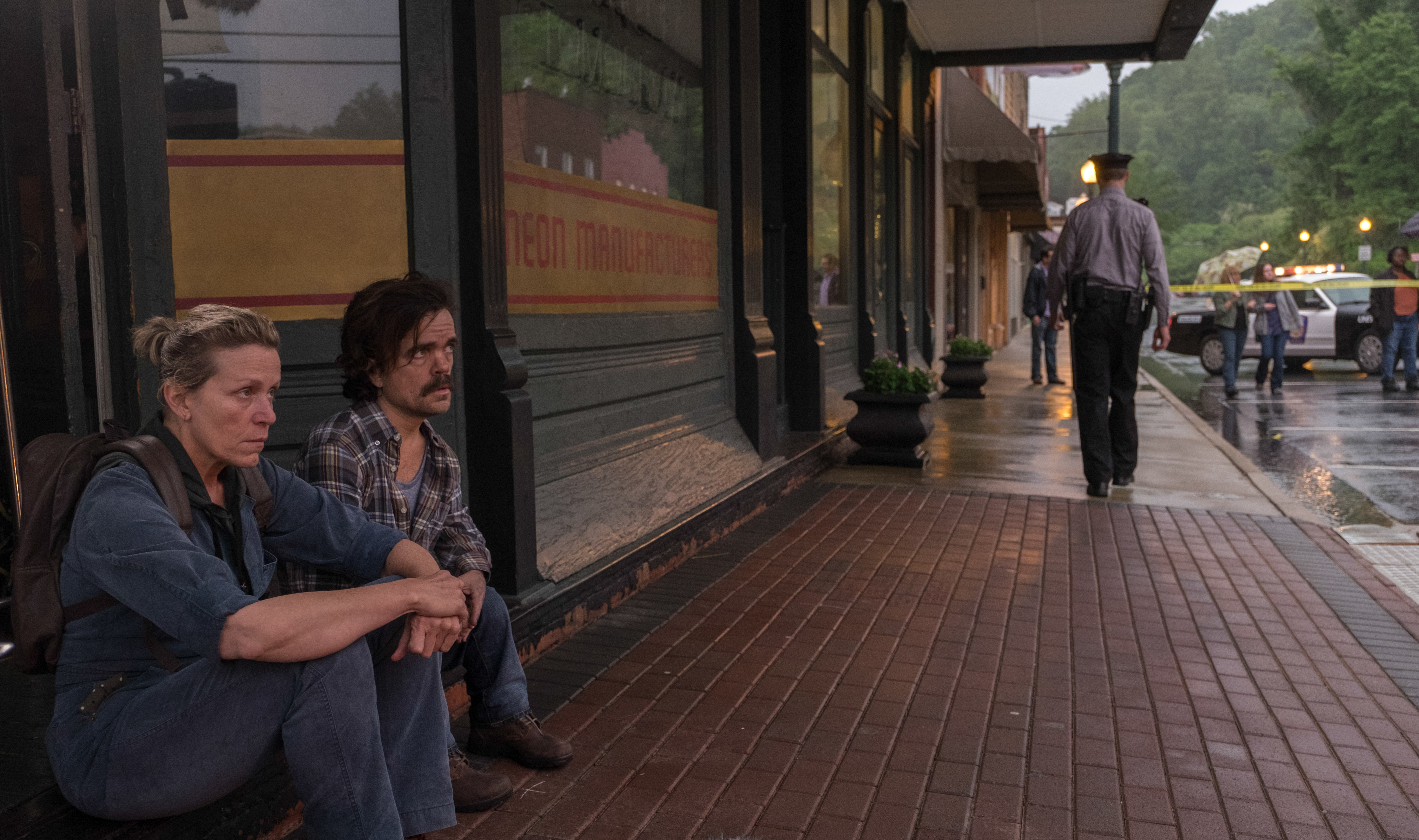
Three Billboards seems to have captured a moment in time, a political and cultural shift in thinking.
It wasn't written to be that, because Martin wrote the script five or six years ago, and none of this had happened. It just seems to be come more and more poignant. It's a sad comment on the world.
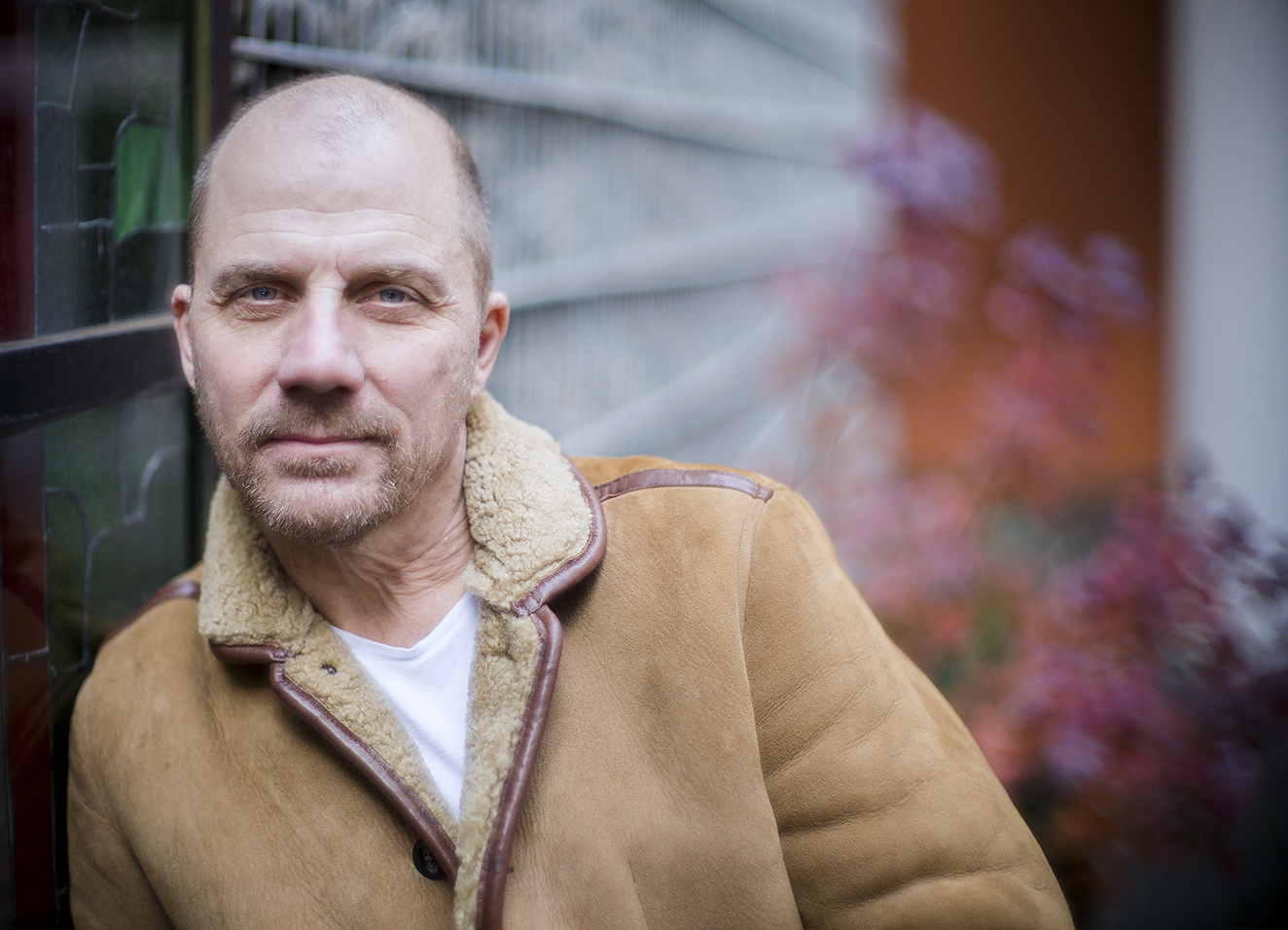
At the same time there's hope there. I don't think it's all about hate and rage. People aren't clearly defined in the world we live in. We have a tendency in making movies where we want to paint characters being either good or bad. Just like with cinematography, there's a whole load of grey area, different tones of gray in between those two extremes. People are like that, people are capable of changing and learning. That's the positive message from the film, because we are all capable of changing.
